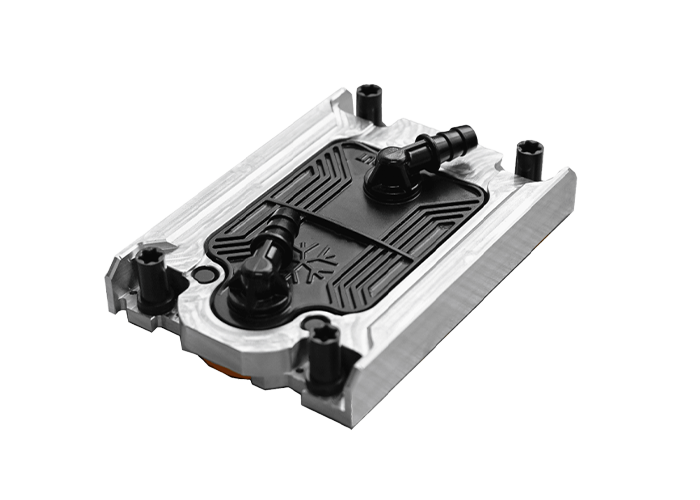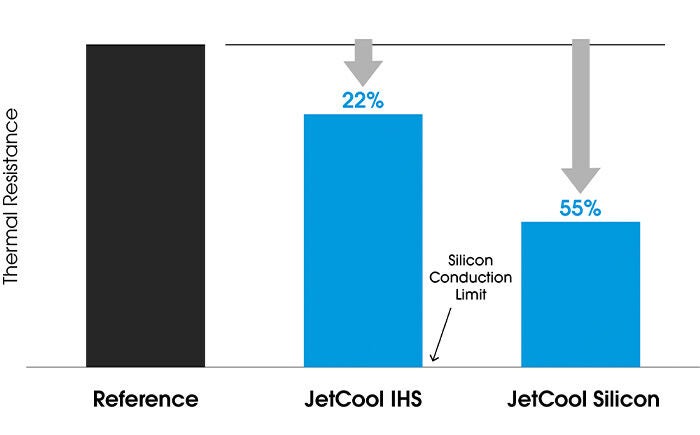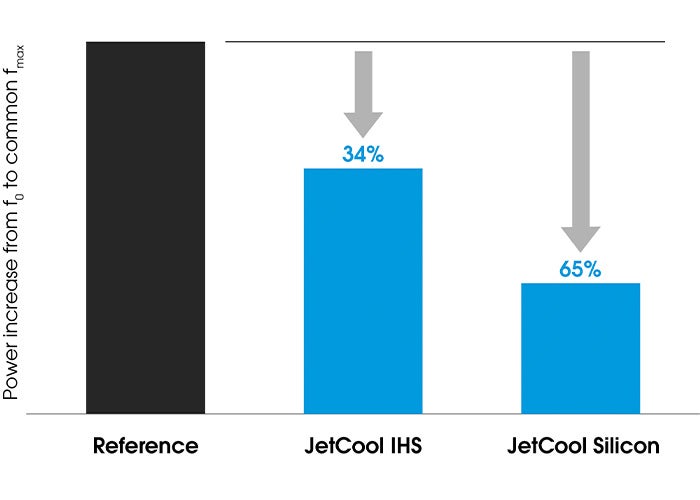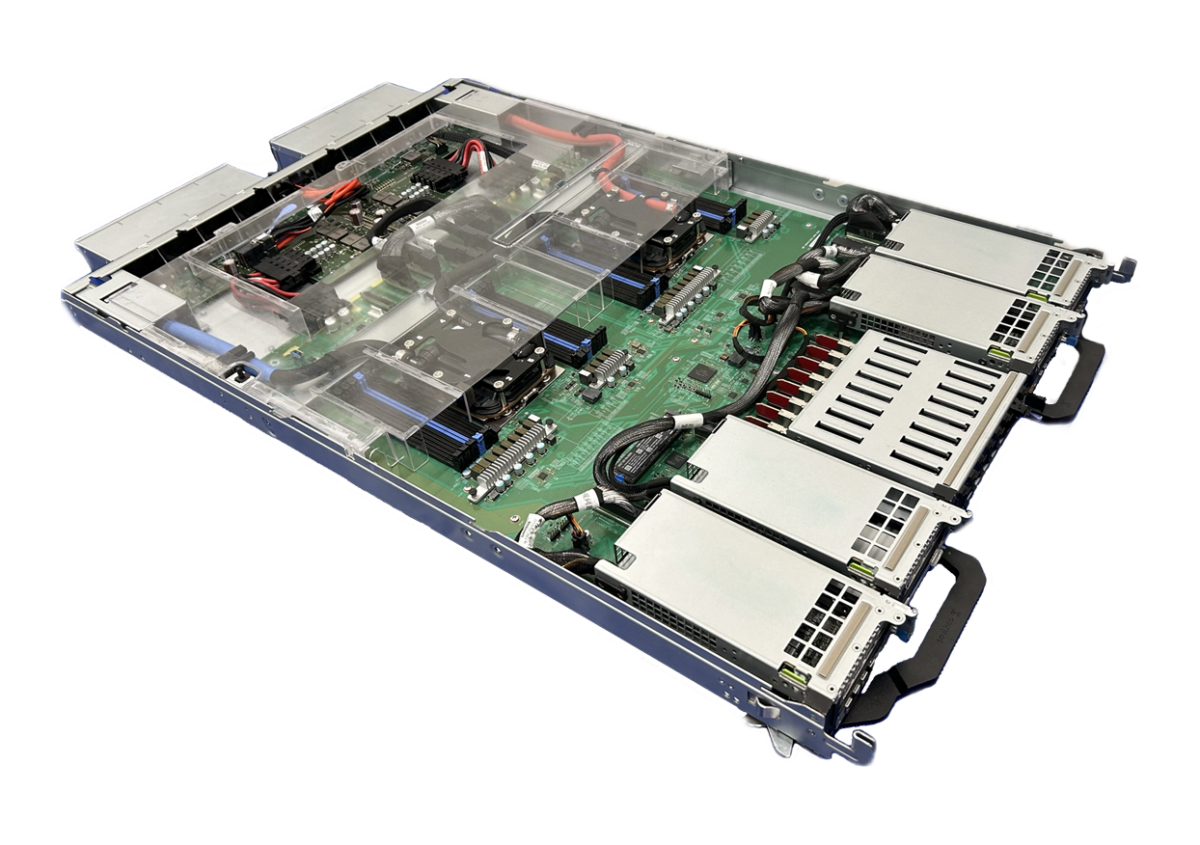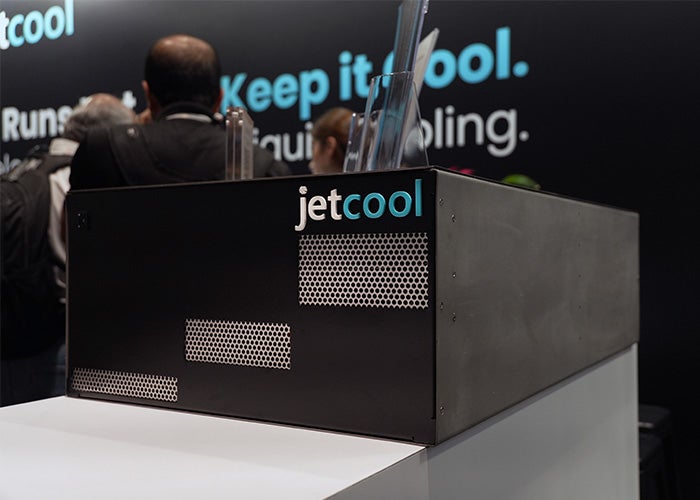Beschleunigte Entwicklungszyklen durch synergetische Technologien
Durch die Kombination der Großserienfertigungskompetenz von Flex mit JetCools patentierte mikrokonvektive Kühlung® Technologiekönnen Hyperscaler fortschrittliche KI- und HPC-Systeme mit verkürzter Markteinführungszeit bereitstellen. Die Mikrojet-Technologie von JetCool nutzt auftreffende Mikrojets, um im Vergleich zur herkömmlichen Mikrokanalkühlung einen deutlich geringeren Wärmewiderstand zu erreichen.
Diese Innovation sorgt für eine bessere Wärmeableitung auf Chipebene, beschleunigt die Optimierung des Wärmemanagements und ermöglicht höhere Leistungsdichten. Die Integration der Mikrostrahlkühlung in die Systemdesigns des Flex reduziert Temperaturgradienten und unterstützt eine gleichmäßigere Wärmeverteilung über komplexe Siliziumarchitekturen hinweg.
Fortschrittliche Flüssigkeitskühlung verbessert die Wärmedichte
Die Direct-to-Chip-Flüssigkeitskühlungstechnologie (D2C) von JetCool unterscheidet sich von anderen Kühltechnologien durch ihre Fähigkeit, Wärmeflusskonzentrationen innerhalb der Chiparchitektur gezielt zu steuern.
Abbildung 1. Thermische Leistungsvorteile durch Reduzierung der Ausbreitung
Da die Chiparchitekturen immer komplexer werden, ist die Wärmestromverteilung tendenziell ungleichmäßiger geworden. Darüber hinaus hat sich die Chipverpackung weiterentwickelt und bevorzugt nun Kühllösungen, die direkt am Chip angebracht werden, und entfernt sich von integrierten Wärmeverteilern.
Selbst mit integrierten Wärmeverteilern können erhebliche Ungleichmäßigkeiten im Wärmefluss bestehen bleiben (z. B. AMD EPYC). Mithilfe der mikrokonvektiven Kühltechnologie von JetCool lassen sich Leistungssteigerungen durch gezielte Hotspots erzielen, die die Maximaltemperaturen senken (Abbildung 1).
Die Möglichkeit, die Wärmeübertragungsverteilung in der Kühllösung anzupassen, führt zu einer gleichmäßigeren Chiptemperatur, verringert die thermischen Spannungen im Chip und maximiert die Lebensdauer des Chips. Wichtig ist, dass die Möglichkeit, die Kühlkonfiguration innerhalb des Chips anzupassen, keine nativen Größenbeschränkungen hat und die Kühlung größerer Chips keine größeren Temperaturschwankungen oder Druckabfälle verursacht, wie dies bei konkurrierenden Technologien zu erwarten wäre.
Durch die Optimierung der Kühlkonfiguration mithilfe des mikrokonvektiven Kühlansatzes von JetCool und die Annäherung der Kühlung an den Chip wird nicht nur eine gleichmäßigere Temperaturverteilung im Chip erreicht; auch die Effizienz des Chips selbst wird verbessert.
Durch Verbesserung der Kühlung, indem man sie näher an den Chip bringt und die Wärmeübertragung auf die Bereiche des Siliziums mit dem höchsten Wärmefluss konzentriert, kann der zur Steigerung der Prozessorbetriebsfrequenz erforderliche Leistungsanstieg um 65% reduziert werden (Abbildung 2).
Das Produktportfolio von JetCool deckt alle aktuellen Herausforderungen der Chipkühlung ab, sowohl hinsichtlich der Gesamtleistung – heute werden Chipsätze mit mehr als 1500 W gekühlt – als auch hinsichtlich der erfolgreichen Beherrschung von Wärmeströmen von weit über 5 W/mm2. Diese Lösungen reichen von vollständig geschlossenen Kühlplatten, SmartPlates, die mit oder ohne Flächenvergrößerung betrieben werden, über unsere Direct-to-Die-Lösung bis hin zu SmartLids, die direkt am Chipgehäuse versiegelt werden und so eine noch bessere Kühlleistung erzielen.
Abbildung 2. Reduzierter Strombedarf zur Erhöhung der Prozessorbetriebsfrequenz
JetCools Portfolio an Kühltechnologien bereitet Hyperscaler auf die Zukunft vor und ermöglicht rasant steigende Wärmelasten und Wärmestromstärken, ohne dass auf Zweiphasenkühlung zurückgegriffen werden muss. JetCool ermöglicht Chipsätze der nächsten Generation ohne Bedenken hinsichtlich transienter Vorgänge oder Cliff-Edge-Effekten wie kritischem Wärmestrom, die wichtige Probleme darstellen, die nur bei Zweiphasenkühlung auftreten.
Skalierbare flüssigkeitsgekühlte Racks für KI- und HPC-Workloads
Energieoptimierungslösungen von Flex
Die Stromverteilungs- und Verwaltungslösungen von Flex ergänzen die Wärmetechnologien von JetCool und schaffen ein komplettes Rack-Level-System, das die Stromnutzung maximiert und Energieverluste minimiert.
Laden Sie das Whitepaper herunter






